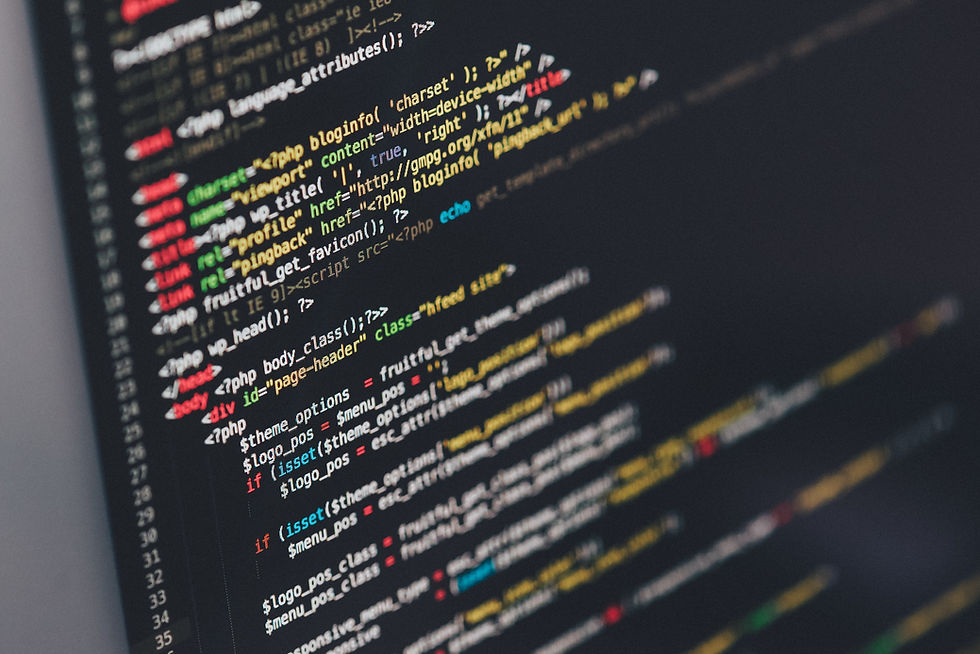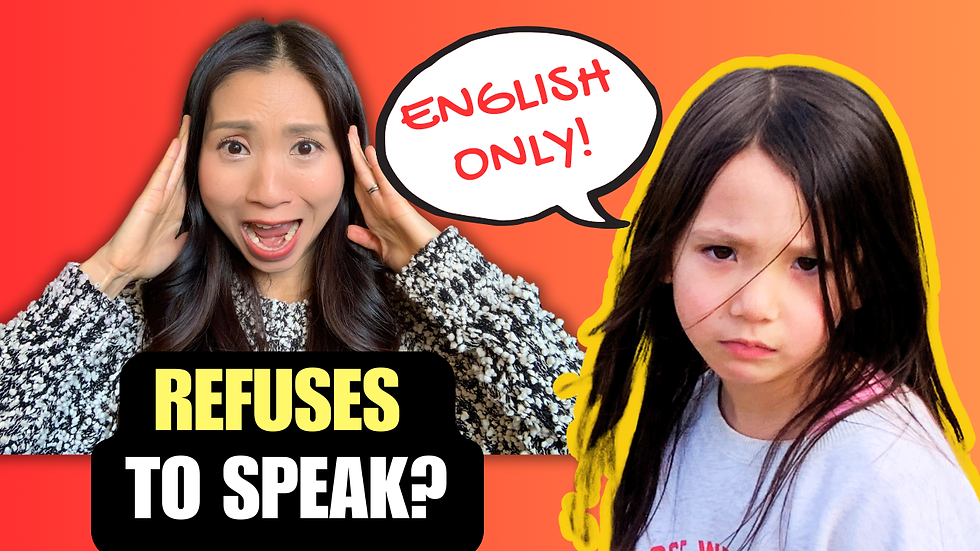Your Bilingual/ Trilingual/ Multilingual Child Is Mixing Languages - Is This Normal? Code-Switching and Code-Mixing Explained
- Ka Yee Meck
- Mar 6, 2024
- 4 min read
Table of Contents
Introduction
If you’ve been raising your child to speak more than one language for a while, it's very likely that you've noticed your child sometimes mixing their languages.
I certainly see that with my own kids, who are raised to be trilingual in Mandarin, Russian and English.
This phenomenon is very common and is, in fact, an inevitable part of growing up with more than one language.
However, at this point, we need to make a distinction between two similar but different concepts:
Code-switching vs Code-mixing
When people say that their kids mix different languages, they’re typically referring to “code-mixing”, as opposed to code-switching.
What has "code" got to do with languages?
Before we even get to the concepts of code-switching and code-mixing, let’s discuss why the word “code” is used in relation to raising multilingual children.
First, let’s look at why languages are compared to “codes”.
Like codes, languages are structured systems of symbols and rules that enable communication between individuals.

Just as codes consist of a set of characters and instructions for encoding and decoding messages, languages comprise phonemes, morphemes, syntax, and semantics that govern how information is conveyed and interpreted.
In a nutshell, this analogy is the basis of terminology such as “code-mixing” and “code-switching”.
Now, let’s first look at the phenomenon of “code-switching”.
Code-Switching Explained
Code-switching refers to the practice of switching between two or more languages or language varieties within a single conversation or discourse.
Speakers may switch from one language to another based on various factors, such as:
social context
the person they’re speaking to (the interlocutor)
the topic
emotional emphasis
Take our family as an example.
My husband and I practise the One Parent One Language (OPOL) strategy with our two children, which means that my husband speaks to them in Russian, I speak to them in Mandarin, and the kids speak English to everyone else.
When we’re together as a family, the children intuitively know that they speak to mummy in Mandarin, and to daddy in Russian.
If my stepdad, who only speaks English, comes along and joins the conversation, they know straightaway to switch to English – that’s code-switching in action.
Code-switching reflects the speaker’s linguistic competence and proficiency in navigating multiple linguistic systems.
If you’re raising your child to speak more than one language, chances are they’ve already developed code-switching skills to some extent!
Code-Mixing Explained
Now, let’s address the phenomenon of “code-mixing”, which is generally what parents mean when they say that their kids “mix” their languages.
Code mixing involves the incorporation of elements from one language into another within the same sentence or utterance.
This can include borrowing words, phrases, or grammatical structures from one language and integrating them into another.
To give you an example, my son might say something like, “Mama, zuotian wo zai xuexiao chi le fish fingers”: mummy, I ate fish fingers at school yesterday. While this sentence is mostly in Chinese, and its structure follows that of Chinese syntax, the words “fish fingers” are in English because he doesn’t know how to say “fish fingers” in Chinese.
If you’ve been raising your child to speak more than one language, you’re very likely to have noticed your child doing something similar.
Is Language Mixing a Bad Thing?
Most, if not all, children who speak more than one language do mix languages.
As parents, please be assured that this kind of “code-mixing” is a totally normal part of language acquisition – it is not a sign of “confusion” but is, in fact, a sign of creativity and problem-solving.
Your child is learning to compensate for the vocabulary they lack in one language by incorporating words from another language.
You’ll notice that as your child gets older, the amount of mixing will gradually decrease; this is because as their vocabulary size in each language grows, they won’t have the need to mix anymore.
Tips for dealing with language mixing
So, what should you do when your child mixes their languages?
Firstly, give yourself permission to relax and accept that code-mixing is normal.
It is usually just a phase that they’ll grow out of, as their vocabulary sizes in each of their languages grow.
Continue to give your child adequate exposure to the target language(s) to help them expand their vocabulary.
If your child is actively trying to speak the target language with you but is incorporating words from the majority language, I suggest “modelling” the correct language for the child: when they mix languages, repeat what they should say in the target language.
This way, your child still gets the correct input without feeling discouraged – the last thing you want is for your child to lose their confidence to speak the target language!
Summary
I hope that this post has helped you understand why your child mixes their languages and why, generally speaking, this isn’t something to worry about.
The thing to bear in mind is that code-switching and code-mixing are both key components of the bilingual experience, and are signs of creativity and problem-solving rather than confusion or inadequacy.
So, next time your child mixes languages, don't be alarmed and simply help them fill in their vocabulary gaps if you'd like your child to speak the target language more consistently - with time, you should definitely see reduced language mixing.




Comments